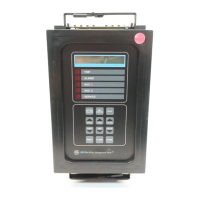GE Power Management 269Plus Motor Management Relay 1-
3
1 INTRODUCTION FEATURES
1
Table 1–1: 269Plus RELAY FEATURES
PROTECTION FEATURES
• Overloads
• Stator Winding Overtemperature (Alarm, High Alarm and Trip)
• Multiple Starts
• Short Circuit
• Locked Rotor
• Rapid Trip/Mechanical Jam
• Unbalance/Single Phasing
• Ground Fault (Alarm and Trip)
• Bearing Overtemperature (Alarm and Trip)
• Undercurrent (Alarm and Trip)
• Variable Lock-Out Time
• Phase Reversal (Meter Option)
OPERATIONAL FEATURES
• Microcomputer controlled
• Keypad programmable
• 48 character alphanumeric display
• Built-in "HELP" function
• Eight selectable standard overload curves
• User-defined custom overload curve capability, FlexCurve™
• Continual relay circuitry self-check
MONITORING AND DISPLAY FEATURES
• Negative sequence phase current unbalance measurement
• Ground fault (earth leakage) current measurement
• Up to six stator RTD inputs
• Four additional RTD inputs
• Monitoring of motor ambient air temperature
• Display of all SETPOINTS or ACTUAL VALUES upon request
• Display of relay TRIP/ALARM and HELP messages
COMMUNICATIONS AND CONTROL FEATURES
• One latched, main trip relay
• One alarm relay
• Two auxiliary relays
• Emergency restart capability
• Pre-trip alarm warnings
• 4-20mA output of motor current as a percentage of full load, motor thermal capacity, hottest stator RTD tem-
perature, percentage of phase CT secondary current, or bearing RTD
• Optional single-shot restart on running overload trip
• Speed switch, differential relay, and spare input
• RS485 port for connection to programmable controllers and computers.
STATISTICAL AND MEMORY FEATURES
• Recall of all pre-trip motor values
• Tamperproof setpoints stored in non-volatile memory
• Microcomputer "learns" motor inrush current, acceleration time, cool down rates, and negative sequence
current heating K factor
• Complete record of motor statistical data: running hours, number of starts, number and type of relay trips
VOLTAGE AND POWER METERING (AVAILABLE WITH MPM)
• Display of 3 phase or line voltages, kWatts, kVars, Power Factor, and frequency.
• Protection features based on Voltage, Power Factor, kVars, and voltage sensed phase reversals.
• Pre-trip values of average voltage, kWatts, kVars, Power Factor, and frequency.
• Accumulated MegaWattHours.

